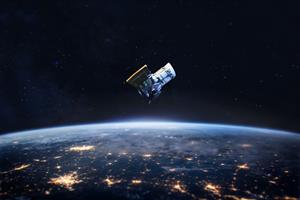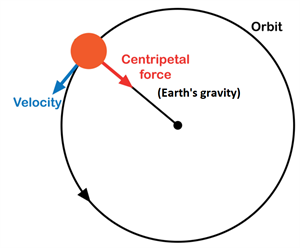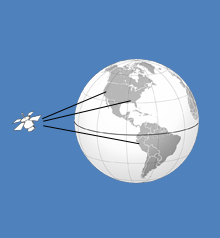
PUMPA - SMART LEARNING
எங்கள் ஆசிரியர்களுடன் 1-ஆன்-1 ஆலோசனை நேரத்தைப் பெறுங்கள். டாப்பர் ஆவதற்கு நாங்கள் பயிற்சி அளிப்போம்
Book Free DemoArtificial satellites are designed to revolve in orbit at the height of a few hundred kilometres above the Earth. The friction due to air is negligible at this height.

Artificial satellite
The artificial satellite is carried to the desired height with the help of a rocket. Then, the satellite is released horizontally with a high velocity so that it is constantly moving in a circular orbit.
The horizontal velocity imparted to a satellite at the determined height to make a circular orbit around the planet is called Orbital velocity.

Orbital velocity
A satellite's altitude from the Earth determines its orbital velocity. The value of orbital velocity should be higher if the satellite is closer to the Earth.
For example, the required orbital velocity is slightly more than \(27,400\ km/h\) at an altitude of \(200\ kilometres\) above Earth. The same orbital speed and distance allow the satellite to complete one revolution in \(24\ hours\).
Since the rotation of the Earth is \(24\ hours\), a satellite also remains in a fixed position relative to a point on the Earth’s surface. The orbit in which the satellite stays over the same spot all the time is known as Geostationary.

Geostationary satellite at a spot
Reference:
https://upload.wikimedia.org/wikipedia/commons/5/53/Geostationary.png